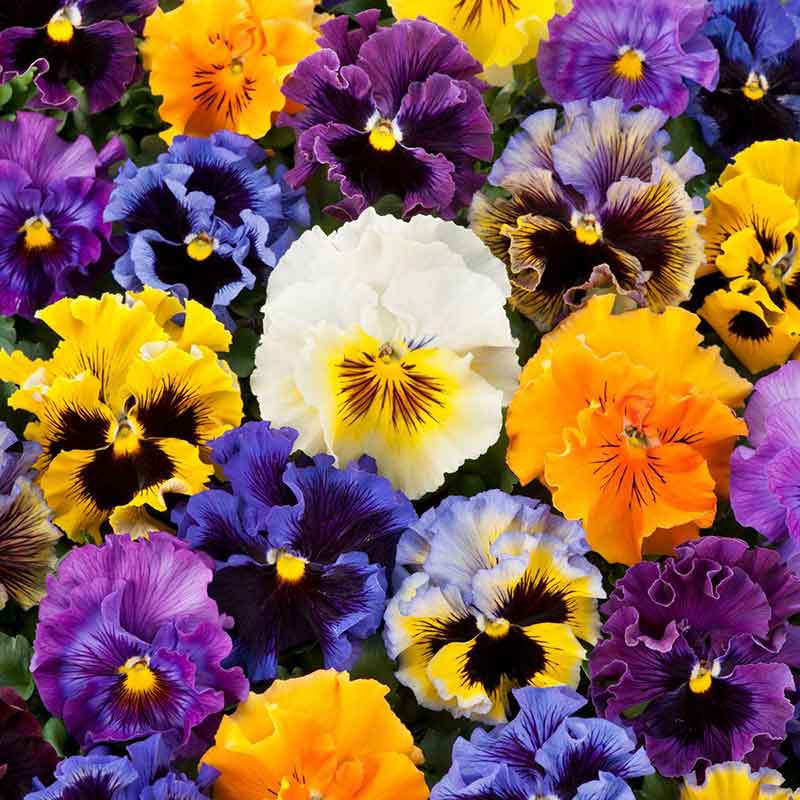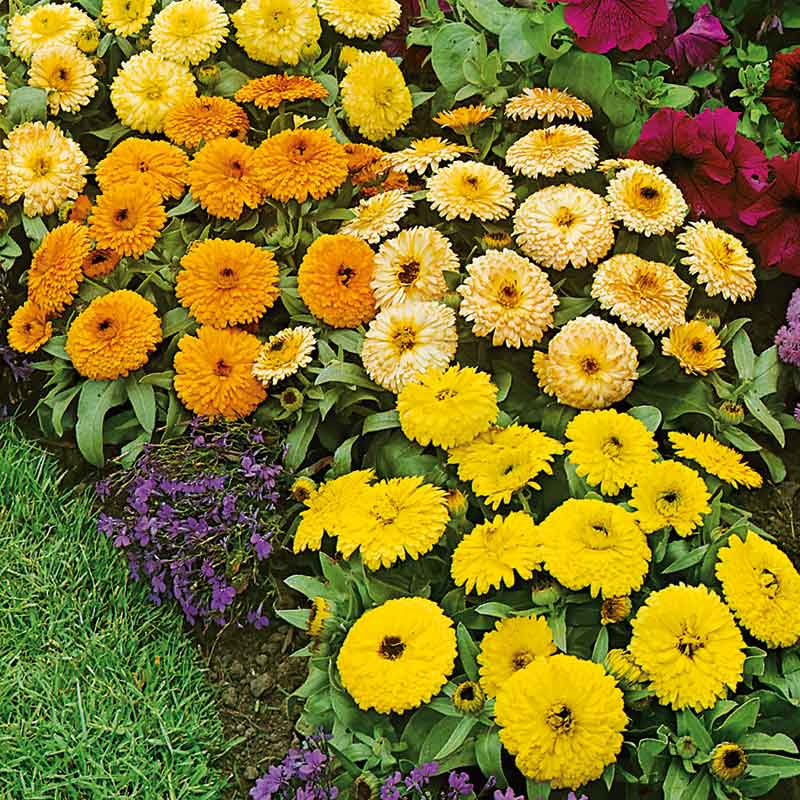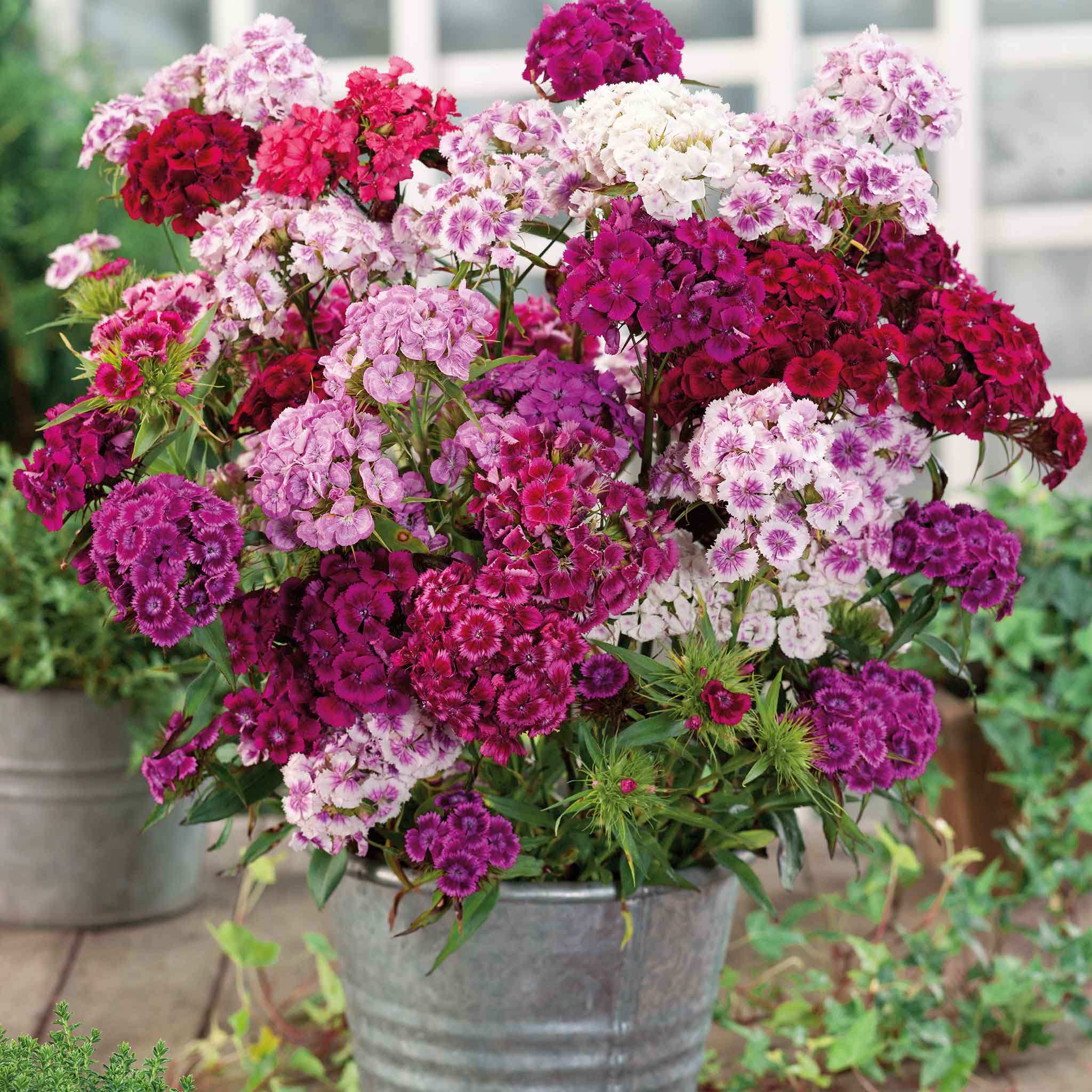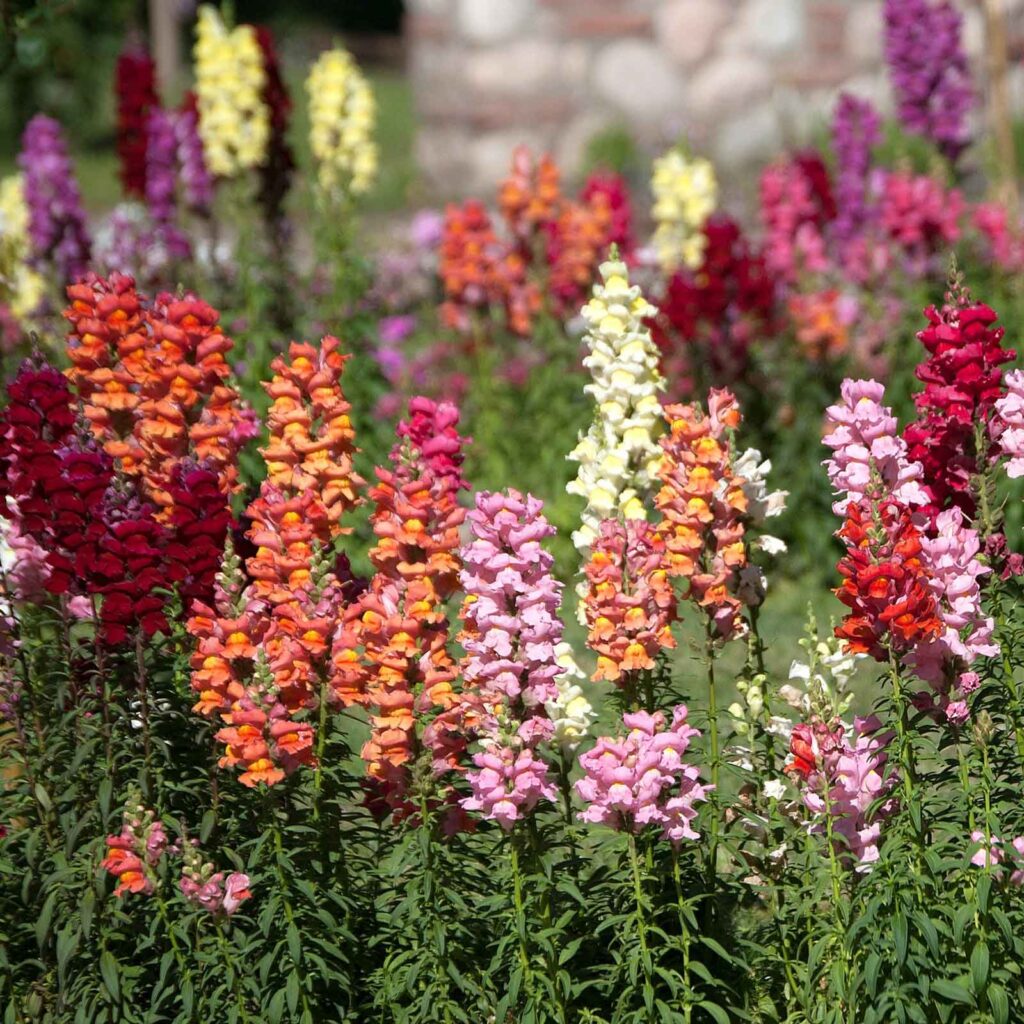As fall slowly spreads its cool weather across the country, countless home gardens begin to lose the vibrant colors of spring and summer and take on a drearier shade of brown as plants and flowers begin to die or go dormant. With the advent of hybridizing certain species of flowers, home gardeners have many more options for keeping their gardens alive and well during the colder months of the year. Here are some of our favorite plants available at Eden Brothers that can provide some welcome color in your home garden throughout the cool season.
Best Cool Weather Flowers for Color
Pansy
While often affiliated with early springtime blooms, the pansy can be grown throughout the winter in regions that only experience occasional hard freezes. Don’t fret northerners, planting pansies in late fall in an area with full sun will reward you come early spring, as the colorful varieties of pansies you planted will fight their way through any last bits of snow or frozen soil and provide a “welcome sign” to springtime gardening. Coming in a variety of colors, from deep blues and rich oranges and yellows to soft whites, the pansy is a very versatile flower that can be used as a companion plant with tulips and daffodils, as a border plant on walkways, or in hanging baskets and window containers.

Calendula
An incredibly hardy annual, Calendula are persistent bloomers that prefer cooler temperatures. Their Latin name, Calendula officinalis, actually means “throughout the months”, indicating that this flower will continue producing stunning golden blooms for a good majority of the year. Similar in size and shape to marigolds, calendula tends to perform best in pots or containers and will grow to about a foot and a half wide by one to two feet high. Find a spot to leave their container that receives full sun, and you’ll be rewarded with a burst of color in your garden as cooler months move into your region.

Dianthus
For a 2-for-1 of color in cooler weather gardens, look no further than the dianthus. These gorgeous flowers not only offer a variety of colored blooms, but their lower leaves also fill out a garden or container with stunning blue-green colors. In the florist industry, the dianthus is one of the most popular cooler weather flowers used in arrangements and is more commonly referred to as carnations. The big, boldly colored blooms of the dianthus prefer cooler climates, and will pump out months of richly fragrant flowers with proper care. Be sure to plant your dianthus at least 12 to 18 inches apart from each other, and DO NOT mulch around the base of the plant. The dianthus requires good air circulation around the base of its stems at all times, and mulching can lead to stunted growth or disease of your plants. Regularly deadheading spent flowers on your dianthus will continue to encourage new growth, and feel free to take some cutting indoors for a vase, where they’ll provide a delightful fragrance for days on end.

Snapdragon
Another incredibly popular cut flower in the floral arrangement space, the snapdragon offers home gardeners a unique bloom that grows in a “spike” pattern, and is packed with color, depending on variety. The snapdragon can grow to over 2 feet tall, so be sure to plant them in an area where they’ll be able to grow vertically without challenging other plants for space. They are a frost-tolerant species and require a full-sun location in your garden. A fun fact about the snapdragon is that they are resistant to deer, who often like to nibble on flowers in home gardens. If you’ve experienced issues with deer in the past, try planting this natural deer-repellant around the border of your garden. It’s certainly going to be easier on the eye than that green wire fence you used last season!

Alyssum
Thousands of tiny blooms create the effect of a colorful carpet with each alyssum that is planted in your garden. This tiny growing flower will rarely grow about a foot tall, but its blooms, that can fill out any basket, pot, or bare space in your garden, certainly make up for its height. In warmer climates that may only experience one or two hard freezes over the cool months, planting alyssum varieties like “Snowcloth” and “Carpet of Snow” can give your home that winter-feel that just can’t be replicated without actually snow! Each tiny blossom on the alyssum is oozing with nectar, making them an excellent attracter for bees and butterflies. When alyssum growth begins to slow, simply cut them back by a third of their height and watch the color show take place all over again!

These certainly aren’t the only genus of flowers that will grow during the cooler months, but they are some of the most dependable to produce color. As always, be sure to keep an eye on your regions frost forecast before planting. Most of the plants mentioned, as well as others that can overwinter, will still require 6 to 8 weeks of initial growth from the time of planting until first frost to become established in the soil and develop a root system that will keep through the cold months. You’ll find so much cheer in a colorful winter landscape, so get planting!